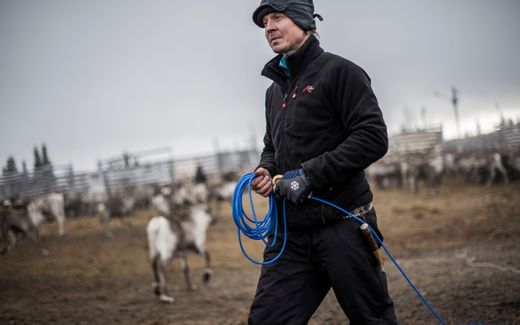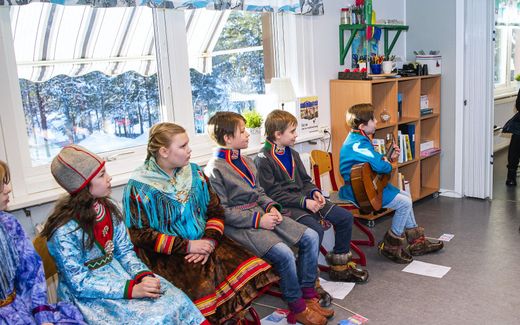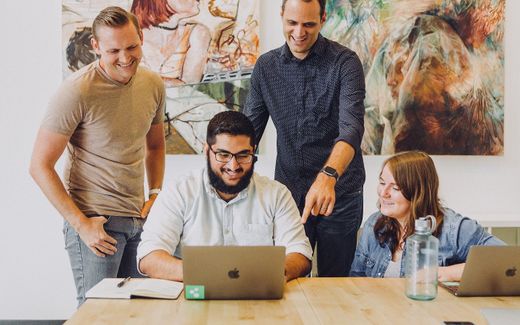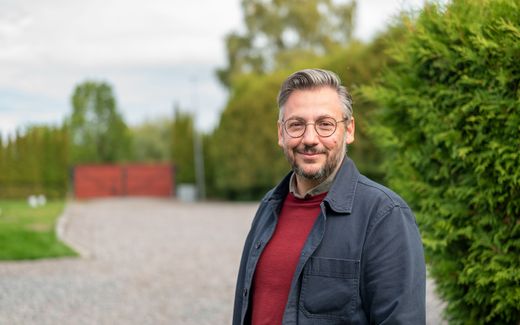Minerals threaten reconciliation between Sweden and Sami

The reindeer are the core of the Sami culture. Mining in the north of Sweden has already been negative for the reindeer. More mining means more pressure on the Sami. That will place the reconciliation at risk. Photo Wikimedia, Silje Bergum Kinsten
Northern Europe
Europe could breathe a sigh of relief, the Swedish government said a few weeks ago. The new earth minerals found in the north would make imports from China unnecessary. Moreover, the new minerals would promote sustainability. However, the discovery does draw a dark cloud over the reconciliation process with the Sami in Lapland.
More minerals mean more mines. More mines mean more trains. More trains lead to more dead reindeer. But reindeer are precisely the core of their culture for most Sami in northern Sweden.
“The herds have not been growing for years,” says Marie Enoksson, who works for the Sametinget (the Sami parliament) and is involved in the Pentecostal movement in Sweden. “Many reindeer find their death under trains or in traffic. Climate change may also be causing there to be less food.”
In winter, the herds stay in the forests, and in summer, in the mountains. Twice a year, the reindeer move. The Sami trek after them. They are not genuinely nomadic, says Frits Ockels, a Dutch field worker for the VPE (United Pentecostal and Gospel Churches) in Lapland. “Scientists call them transhumance.”
Fellow-citizens
Like other peoples who are not tied to a particular country –such as Sinti and Roma, and Jews– the Sami have suffered centuries of discrimination. The permanent residents of the countries they reside in do not see them as real fellow citizens with their own history.
Ockels still sees this pattern. “The Sami obviously had names for rivers, mountains and lakes. The Swedes never listened to that and gave new names. Recently, the name Trollsjö was translated into Sami: Ruollajarvi. But that is not the original. The memory of the old Sami name has gone. People don’t understand that with it, a piece of history and identity is also being erased.”
Political agenda
All conversations about the Sami sooner or later mention the Lutheran Church of Sweden. Until 2000, this was the state church, which acted as an extended arm of the state for centuries. In Christianisation, colonisation came first -for example, by imposing taxes- and the Gospel followed only later. Today, the church is still strongly tied to politics. The general assembly, for example, is formed of representatives of political parties that carry out a political agenda.
In late 2021, the church released an official confession of guilt (apology). “The church started a process of reconciliation, with eight measurable points,” says Nils-Johan Labba, vice-president of the Sami Council in the Swedish Church. “In itself, it’s good, I think. But apart from that, the church is full of politics. If someone proposes something that improves the rights of the Sami, he is put down. The general climate towards us is negative.”
Whitebook
In 2016, the Church of Sweden published a ‘whitebook’ on the Sami. In it, the church admits that it has always looked at the north with a racist eye. In church schools, for example, research was conducted on the size and content of the skull to classify people into a specific racial category.
This must be admitted, says Sami and environmentalist Ola Bergdahl. “But that white paper is silent on the most important issue: land theft.” Piquant detail also: the Swedish Church still owns many forests in the country’s north.
Much land that traditionally belonged to the Sami became unusable for reindeer herds due to mining. Around 1900, Kiruna was built. Around the city, the landscape turned into a large industrial area full of mines, mainly for iron ore. Worldwide, Sweden became famous with brands like Volvo and Saab. But for the Sami, it was disastrous. Even clean mining damages the landscape, if only because of transport and traffic.
The Sametinget (the Sami parliament) does have a stance on mining, says Marie Enoksson. “It acknowledges that the mines are necessary but also emphasises that they should not expand. Nothing of that will be achieved, of course. More and more migration routes that the reindeer have used for thousands of years are no longer usable. The new minerals that have been found will only reinforce that.”

Nils-Johan Labba calls the news about the newly found “rare minerals” a “cheap advertising talk” from the Swedish mining company LKAB. “Here in Kiruna, we knew for decades that this was in the ground. Apparently, it was now beneficial to come out with this story.”
He finds it hypocritical to sell minerals to live sustainably and become independent from China. “If you opt for sustainability, it is better to invest in the reindeer. These provide meat and other materials from our own land. You can also choose forests over mines.”
Idols
As an environmentalist, Ola Bergdahl spends much of his time above the Arctic Circle and is in contact with fellow Sami in other countries, including Russia. He also studied theology and is involved in the interdenominational evangelical movement “Frimodig kyrka”. He is very pessimistic about the Church of Sweden, of which he is an active member. He also sees little point in the apology from late 2021. “The Church of Sweden has done very little to really bring people to Jesus. It usually comes down to the national church bringing Sami people back to their old idols. But remember: the agenda behind this was to distinguish race from race and cause cultural differences to separate the Sami from others.”
Labba is less troubled by mixing the Sami’s ancient paganism and Christianity. “In the past, the Church of Sweden always brought it very strictly. You had to choose between Jesus or the shaman. Nowadays, that strictness is somewhat over. I think the two faiths can be combined very well.” According to him, the Sami are currently more involved in the faith than the Swedes. “Our confirmation camps are better attended,” he says.
Enoksson finds it dangerous that many Sami want to return to holy stones and sacred places. “This is New Age syncretism. This mixing of religions can become a consequence of the Swedish church’s apology. Such a statement may weaken the Christian witness. But let us not be ashamed of the Gospel.”
Enoksson does think that the Church of Sweden bears a lot of blame towards the Sami and that an apology is in place. “The Church was part of the power and cooperated to dominate Lapland. Our people never felt seen. We were always met with distrust.”
This is precisely why she feels at home in the Pentecostal movement, which grew strongly in Sweden from the early 20th century. “From the beginning, that was a protest movement against the state church.”
Mission schools
Bergdahl is enthusiastic about the work of the royal family after 1880: King Oscar, Queen Sophia and Princess Eugenie after 1880. “The princess received a message from God to do something good for the Sami. This resulted, among other things, in the creation of mission schools in Lapland. That led to several revivals. But by 1916, it was all over. The state took control of the schools, and the socialist worker’s movement was empowered by the dissolution of the Union between Norway and Sweden in 1905. The Swedish church was the authority used to abuse the Sami people. The era of the Evangelical Lutheran revival impact on the Sami through the royal family was now over.”
Nobody knows how many Sami there are
The Sami people are the original people of Lapland (Sápmi, Samiland). This region spans the northern part of four countries: Norway, Sweden, Finland and Russia.
Traditionally, most Sami have lived off reindeer, one way or another. Nowadays, tourism also brings part of the income. A minor part of the Sami lives by hunting or fishing.
Nobody knows how many Sami there are. It is usually reckoned that there are 100,000 in four countries. But the definition of what a Sami is varies in those countries.
There are about ten different languages among the Sami. Only northern Sami has a decent number of speakers. The second Bible translation in that language was published in 2019.
Since 1993, Sweden has had the Sametinget, the Sami parliament in the northern city of Kiruna. However, it only has an advisory role; the Riksdag makes decisions in Stockholm.
There are 9200 adult Sami in Sweden registered to vote for the Sametinget.
There has been missionary activity among the Sami as early as the Middle Ages. Still, the people as a whole were never won for Christianity. Between 1850 and 1920, however, there were some revivals among the Sami, including through the work of the so-called apostle of the Sami, Lars Levi Læstadius (1800-1861).
February 6th is the annual Sami National Day.
Related Articles








